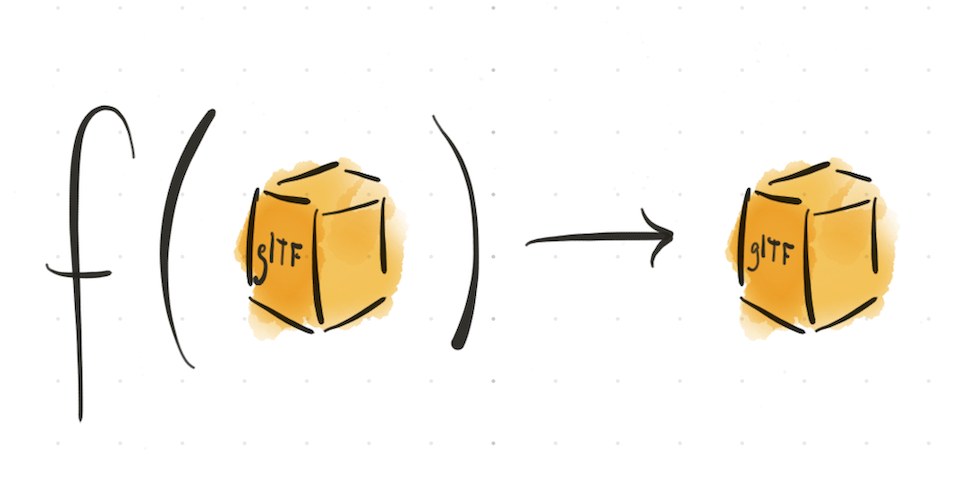Root
Hierarchy
- EventDispatcher
- GraphNode
- Property
- ExtensibleProperty
- Root
Constructor
Properties
Methods
Lists all Accessor properties associated with this root.
Lists all Animation properties associated with this root.
Returns the
assetobject, which specifies the target glTF version of the asset. Additional metadata can be stored in optional properties such asgeneratororcopyright.Reference: glTF → Asset
Lists all Buffer properties associated with this root.
Lists all Camera properties associated with this root.
Default Scene associated with this root.
Default Scene associated with this root.
Dispatches an event on the GraphNode, and on the associated Graph. Event types on the graph are prefixed,
"node:[type]".
Removes both inbound references to and outbound references from this object. At the end of the process the object holds no references, and nothing holds references to it. A disposed object is not reusable.
Returns true if two properties are deeply equivalent, recursively comparing the attributes of the properties. Optionally, a 'skip' set may be included, specifying attributes whose values should not be considered in the comparison.
Example: Two Primitives are equivalent if they have accessors and materials with equivalent content — but not necessarily the same specific accessors and materials.
Returns an ExtensionProperty attached to this Property, if any.
Attaches the given ExtensionProperty to this Property. For a given extension, only one ExtensionProperty may be attached to any one Property at a time.
Lists all Extensions enabled for this root.
Lists all Extensions enabled and required for this root.
Lists all ExtensionProperty instances attached to this Property.
Returns a reference to the Extras object, containing application-specific data for this Property. Extras should be an Object, not a primitive value, for best portability.
Updates the Extras object, containing application-specific data for this Property. Extras should be an Object, not a primitive value, for best portability.
Returns true if the node has been permanently removed from the graph.
Lists all Material properties associated with this root.
Lists all Mesh properties associated with this root.
Returns the name of this property. While names are not required to be unique, this is encouraged, and non-unique names will be overwritten in some tools. For custom data about a property, prefer to use Extras.
Sets the name of this property. While names are not required to be unique, this is encouraged, and non-unique names will be overwritten in some tools. For custom data about a property, prefer to use Extras.
Lists all Node properties associated with this root.
Returns a list of all properties that hold a reference to this property. For example, a material may hold references to various textures, but a texture does not hold references to the materials that use it.
It is often necessary to filter the results for a particular type: some resources, like Accessors, may be referenced by different types of properties. Most properties include the Root as a parent, which is usually not of interest.
Usage:
const materials = texture .listParents() .filter((p) => p instanceof Material)
Lists all Scene properties associated with this root.
Lists all Skin properties associated with this root.
Lists all Texture properties associated with this root.

Made by Don McCurdy. Documentation built with greendoc and published under Creative Commons Attribution 3.0.
Root property of a glTF asset.
Any properties to be exported with a particular asset must be referenced (directly or indirectly) by the root. Metadata about the asset's license, generator, and glTF specification version are stored in the asset, accessible with Root.getAsset.
Properties are added to the root with factory methods on its Document, and removed by calling Property.dispose() on the resource. Any properties that have been created but not disposed will be included when calling the various
root.list*()methods.A document's root cannot be removed, and no other root may be created. Unlike other Property types, the
.dispose(),.detach()methods have no useful function on a Root property.Usage:
const root = document.getRoot(); const scene = document.createScene('myScene'); const node = document.createNode('myNode'); scene.addChild(node); console.log(root.listScenes()); // → [scene x 1]Reference: glTF → Concepts